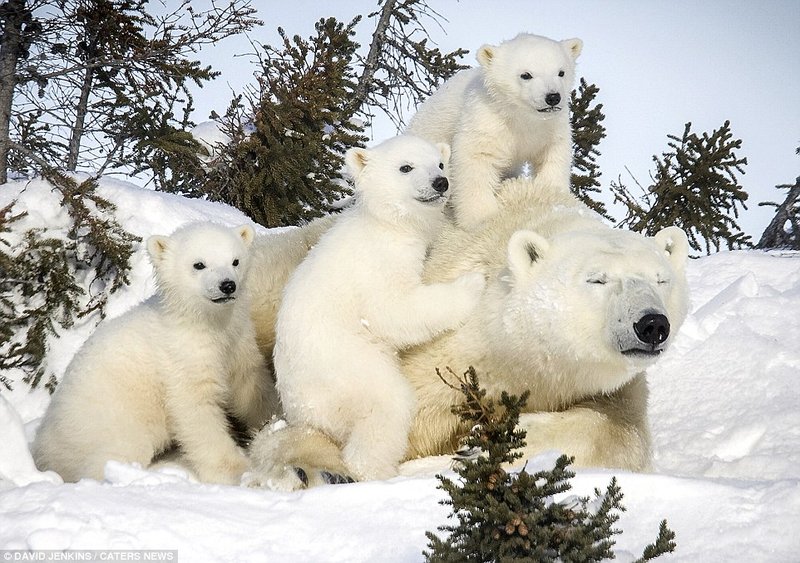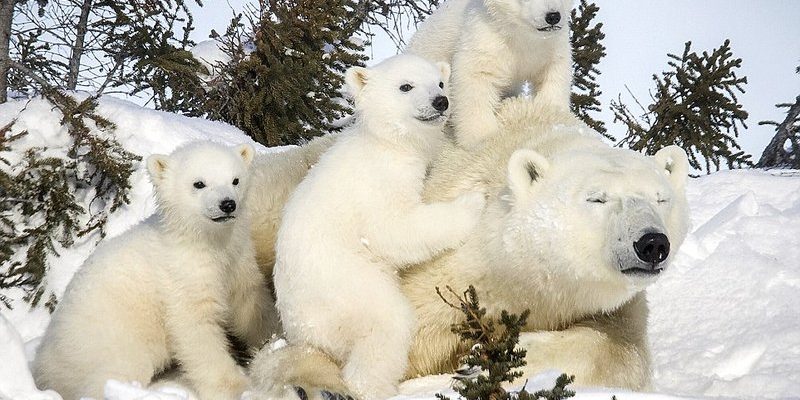
You might be wondering, what does it really take for a polar bear to raise its young? Well, just like any caring parent, a mother polar bear develops a deep bond with her cubs, teaching them vital survival skills. This isn’t just playtime in the snow; it’s about survival amidst frigid temperatures, ice floes, and a constant search for food. The nurturing process is as tender as it is tough, and it reveals much about the resilience of these bears in their icy world.
The Polar Bear Family Structure
Polar bear families usually consist of a mother and her cubs. After a long pregnancy lasting about eight months, a female polar bear typically gives birth to one to three cubs in a cozy den. This den is often dug into the snow and provides insulation from the harsh Arctic winds. The mother, known as a sow, is fiercely protective and stays with her cubs for about two to three years.
During the first months, these tiny cubs are born blind and are about the size of a kitten. Can you imagine how helpless they must feel? The mother’s dedication is crucial at this stage. She keeps them warm and feeds them with her rich milk, which is packed with fat and nutrients. This initial bonding period is essential, as it helps the cubs grow strong enough to tackle the challenges that lie ahead.
The Importance of the Den
The den is more than just a shelter; it’s a vital space for raising polar bear cubs. Located in thick snowdrifts, these dens protect the cubs from predators and provide a temperature-controlled environment. When a sow prepares for the winter, she selects a location that’s hidden away, like a secret hideout, ensuring her young ones are safe from harm.
Here’s the thing—this insulated space allows the cubs to grow during the harshest months. The mother will stay in the den with her cubs for several months, only venturing out to hunt when necessary. After all, the Arctic is a tough landscape where food can be scarce. So, while she seeks nourishment, her top priority remains the safety and development of her cubs.
Teaching Survival Skills
As the cubs grow, their mother starts teaching them important survival skills. You might picture her guiding them on how to hunt or navigate the ice, but it’s often more about playful experimentation. For instance, a mother bear will engage her cubs in play-fighting to build their strength and confidence, which is crucial for real life later on.
Cubbies learn how to walk on the ice and swim and develop the skills they need to hunt seals, their primary food source. Honestly, it’s a mix of fun and necessity. They may tumble and fall, but each little misstep is a teaching moment. The mother encourages their curiosity, showing them by example and allowing them to explore their environment safely.
The Weaning Process
Weaning is a significant milestone in a polar bear cub’s life. It usually begins when they are around six months old. At this stage, the mother starts introducing solid food alongside her milk. Think of it as their first taste of independence! She might bring back bits of seal or other food, showing them what’s safe to eat and how to catch it.
This phase can be a bit tricky because the cubs still rely heavily on their mother. They often play at her feet, begging for milk even when it’s time to transition. The sow has to balance her own needs for nourishment with the need to prepare her cubs for life without her. Once they begin to eat regularly, they’ll gradually rely less on her milk, taking their first steps toward independence.
Facing the Challenges of the Arctic
Raising cubs in the Arctic comes with a set of unique challenges. Polar bears face climate change, which alters their habitat and food sources. As ice melts, hunting becomes tougher, impacting not only the mother but also her young. The ability to adapt becomes crucial for survival, and this is where the skills learned during cubhood play a significant role.
The Arctic environment is unforgiving, and a sow must ensure her cubs are stronger and more capable each day. Unfortunately, if the mother cannot find enough food, she may struggle to raise her young effectively. This harsh reality adds stakes to their already intense upbringing. It’s a constant reminder that, while the bond between mother and cubs is strong, survival often hinges on environmental factors beyond their control.
The Lifelong Impact of Maternal Care
The first few years of a polar bear’s life shape their behavior and survival instincts for life. Cubs that receive ample nurturing tend to grow up to be successful hunters and mothers themselves. This maternal care not only teaches them about survival but also instills social behaviors that are essential for living in groups, known as a “sleuth.”
Interestingly, scientists have observed that the bond between a mother and her cubs can remain strong even after they leave the den. Cubs often recognize their mothers in the wild and may even come back for visits, especially when they’ve encountered challenges of their own. This highlights the emotional depth that polar bears have, reminding us that even in the wild, relationships matter.
Raising polar bear cubs is a remarkable journey that combines resilience, tenderness, and survival skills. From the safety of the den to the challenges of a changing climate, mother polar bears navigate it all with grace and determination. Their nurturing not only helps young bears grow strong but also teaches them the essential skills they need to thrive in the Arctic.
As we learn about how polar bears raise their young in the wild, it becomes clear that their stories are about more than survival; they reflect the deep connections that define family life in the animal kingdom. Next time you think of polar bears, remember the incredible journey of motherhood they embark on in one of the most beautiful yet brutal environments on Earth.

